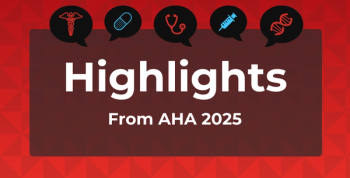
Takeaways From PAN Foundation Cost-Sharing Roundtable
An executive summary of the report on the PAN Foundation roundtable, presented with The American Journal of Managed Care, discussed the shift from the problem of the "uninsured" to the "underinsured."
Advocacy groups and foundations play a role in helping patients meet new cost-sharing challenges in healthcare, but they cannot provide a long-term solution by themselves, according to a report on the roundtable hosted earlier this year by the Patient Access Network (PAN) Foundation, in collaboration with The American Journal of Managed Care (AJMC).
The PAN Foundation and AJMC presented Cost Sharing Roundtable: Improving Access to Critical Therapies on February 26, 2016, which featured national experts from advocacy groups, academia, insurers, and the pharmaceutical industry on the shifting challenges of helping patients afford drugs as prices rise and the nature of the problem changes.
The Affordable Care Act (ACA) has brought coverage to millions—the Obama Administration states 20 million now have it because of the law. But, as an executive summary to the 60-page report states, the problem has shifted from the “uninsured” to the “underinsured.” Many beneficiaries of modest means have plans that feature low premiums, but their out-of-pocket costs are crippling in the event of a major illness.
The problem, as this report and other research has found, is that the ACA plans appeal to the most-price sensitive Americans, and many do not understand how to evaluate a plan based on value. When those with chronic disease or cancer have a plan requiring high co-payments or co-insurance, the executive summary states, “it causes the greatest hardship for the most vulnerable population.”
The summary discusses the challenges associated with “specialty tier” medications, for diseases like cancer and hepatitis C virus. Drug development in these areas has exploded since the advent of Medicare Part D in 2006, and the drug benefit has not kept pace with rising costs of new therapies.
Potential solutions featured in the summary include:
· Reducing specialty-tier drug costs by increasing the cost of lower-tier drugs.
· Finding ways to more evenly distribute drug costs, thus taking some of the burden off Medicare Part D enrollees.
· Improving benefit design, and limiting out-of-pocket expenses to a defined monthly minimum.
· Ensuring that at least one specialty drug in each therapeutic class is on a non-specialty tier.
· Putting more focus on value-based design.
The roundtable was associated with an invitation for policy proposals and case studies that were published in a special supplement to AJMC, which can be found by
Newsletter
Stay ahead of policy, cost, and value—subscribe to AJMC for expert insights at the intersection of clinical care and health economics.









































